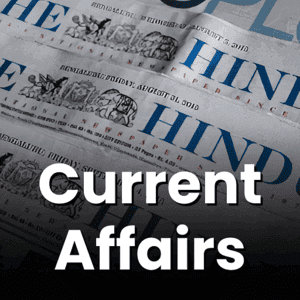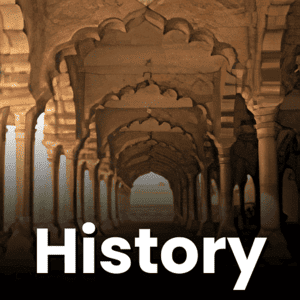UPSC Daily Current Affairs: 25th January 2025 | Current Affairs & Hindu Analysis: Daily, Weekly & Monthly PDF Download
GS2/International Relations
Strengthening India-Indonesia Ties Beyond China Factor
Source: Indian Express
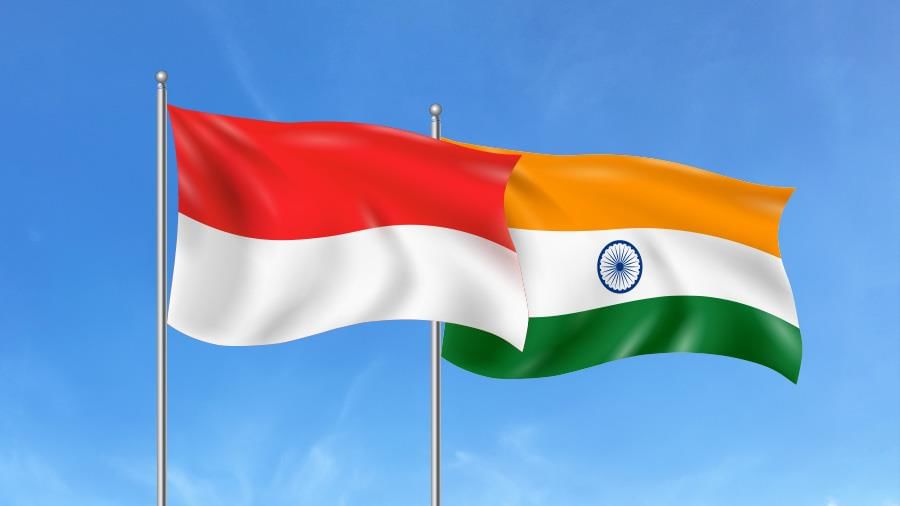 Why in News?
Why in News?The visit of Indonesian President Prabowo Subianto to India on Republic Day signifies a crucial juncture in the bilateral relations between India and Indonesia. This evolving dynamic highlights the mutual aspirations for a comprehensive strategic partnership, focusing on regional collaboration and identifying areas of cooperation that extend beyond the influence of China, particularly within the Indo-Pacific region.
- The diplomatic rapport between India and Indonesia has been solidified through regular consultations between foreign ministers.
- Indonesia's membership in BRICS presents new opportunities for collaboration, especially in the context of its economic ties with China.
- Joint maritime initiatives under the Indo-Pacific Oceans Initiative (IPOI) can enhance regional security and cooperation.
- Strengthening trilateral partnerships, particularly with Australia and potentially Japan, can bolster regional stability.
Additional Details
- BRICS Membership: Indonesia's inclusion in BRICS in 2023 opens doors for both nations to leverage their collective strength within the bloc while addressing shared interests amidst Indonesia's economic ties with China.
- Indo-Pacific Collaboration: Indonesia's commitment to the Indo-Pacific concept aligns with India's IPOI, fostering opportunities for cooperation in maritime resources.
- Trilateral Frameworks: The India-Indonesia-Australia trilateral partnership can be enhanced by integrating Japan, thus creating a robust alliance focused on regional security.
- Engagement in ASEAN-led mechanisms like the East Asia Summit (EAS) can provide a platform for addressing regional issues, including divergent views on Myanmar.
- Inviting Indonesia to the Bay of Bengal Initiative for Multi-Sectoral Technical and Economic Cooperation (BIMSTEC) enhances its integration with India's eastern neighborhood.
In conclusion, President Prabowo Subianto's visit to India offers a significant opportunity to redefine and strengthen bilateral relations. By leveraging platforms such as BRICS, IPOI, and trilateral partnerships, both countries can enhance their strategic collaboration. Despite the challenges posed by Indonesia's economic ties with China, focusing on areas of convergence will be pivotal in shaping the future of Indo-Pacific dynamics and establishing both nations as key regional players.
GS2/Polity
At 75, Constitutional Justice and Personal Liberty
Source: The Hindu
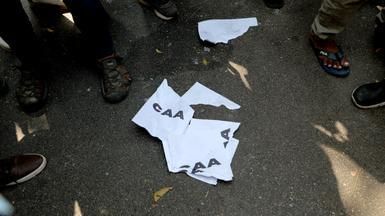 Why in News?
Why in News?As we commemorate 75 years of the Constitution of India, it is crucial to evaluate not only its successes but also the ongoing challenges to its foundational values. The Constitution, designed to be a guiding principle of justice, equality, and liberty, currently faces significant ethical and moral dilemmas.
- Dissent is a fundamental constitutional ethic essential for maintaining democracy.
- The judiciary plays a vital role in upholding personal liberty and dissent against state power.
- Past and present legal challenges highlight the ongoing struggle for justice and individual rights.
Additional Details
- Dissent as a Constitutional Ethic: Dissent is not just a right; it is integral to the democratic framework of India, balancing state authority and individual freedoms. The Supreme Court's evolving interpretation emphasizes this role in various landmark judgments.
- A.K. Gopalan vs State of Madras: This 1950 case presented a pivotal moment in defining dissent and personal liberty, where Justice S. Fazl Ali's dissenting opinion highlighted the interconnectedness of liberty, justice, and dignity.
- Puttaswamy vs Union of India: The 2017 verdict reaffirmed the right to privacy and recognized the importance of dissent, marking a shift towards a broader understanding of justice.
- Contemporary Challenges: Recent trends show an increase in the criminalization of dissent, with laws being misused to suppress voices of resistance, echoing historical injustices.
- The Judiciary’s Responsibility: The courts are tasked with protecting constitutional values and must address systemic issues that hinder the protection of personal liberty and dissent.
- Creative Constitutionalism: This concept advocates for innovative judicial interpretations that prioritize justice and human dignity, moving away from rigid proceduralism.
The Constitution of India embodies an enduring vision of justice, equality, and liberty that must be safeguarded. As we reflect on its journey, it is vital to recognize the need for creative constitutionalism and the prioritization of individual dignity to fully realize the transformative potential of the Constitution.
GS1/History & Culture
Research Identifies Tamil Nadu as the Birthplace of the Iron Age
Source: Indian Express
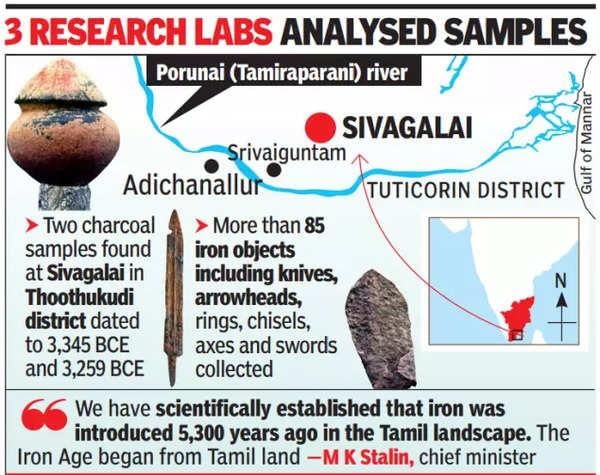 Why in News?
Why in News?A revolutionary study indicates that the Iron Age in Tamil Nadu commenced around 3,345 BCE, significantly earlier than previously accepted timelines, challenging established historical narratives. This report was co-authored by K Rajan from Pondicherry University and R Sivanantham from the Tamil Nadu State Department of Archaeology.
- The Iron Age in India was traditionally believed to have started between 1500 and 2000 BCE.
- Recent archaeological findings in Tamil Nadu suggest iron usage dates back to as early as 3345 BCE.
- Technological advancements during this period included sophisticated iron-smelting techniques.
- The research highlights Tamil Nadu's role as a significant center for early metallurgy.
Additional Details
- Technological Advancements: The Iron Age represented a major leap in metallurgy, succeeding the Copper-Bronze Age. Iron smelting required advanced furnaces capable of achieving temperatures of 1534°C.
- Archaeological Evidence: Key sites across North India (e.g., Hastinapur, Kausambi) and South India (e.g., Adichanallur, Mayiladumparai) have revealed iron artifacts, confirming the region's rich metallurgical history.
- Iron tools played a crucial role in agricultural expansion, aiding in forest clearance and contributing to urbanization in the Ganga valley around 800–500 BCE.
- The study provides radiometric dating evidence, establishing iron technology in Tamil Nadu as early as 3345 BCE, with significant finds from various archaeological sites.
This groundbreaking research not only reshapes the historical understanding of the Iron Age in India but also positions Tamil Nadu as a pivotal player in the development of early metallurgy globally, marking a significant turning point in Indian archaeology.
GS2/Polity
Foundational Values, the Journey of the Indian State
Source: The Hindu
Why in News?
As India commemorates the 75th anniversary of its Constitution's enforcement, it serves as an opportunity to reflect on the nation's path while reaffirming its foundational values. This pivotal document established the framework for a sovereign democratic republic, aspiring to uphold liberty, equality, and fraternity. However, as B.R. Ambedkar’s insightful comments during the Constituent Assembly in November 1949 highlight, this journey has faced significant challenges.
- India's federal structure is unique, blending unitary and federal characteristics.
- The role of State Governors has often been contentious, leading to strained relations between the Union and States.
- Simultaneous elections have sparked debates regarding efficiency versus regional autonomy.
- Linguistic diversity poses challenges to maintaining a federal structure.
- Economic and social inequalities persist, impacting the journey towards social justice.
- Ambedkar's vision of co-equal powers remains crucial for India's democratic integrity.
Additional Details
- Indian Federalism: India operates a 'quasi-federal' model that accommodates diverse socio-cultural realities while striving for national unity. This flexibility has helped address regional aspirations but has also resulted in challenges in Union-State relations.
- State Governors: Expected to act neutrally, Governors have often been viewed as agents of the Union government, leading to legal disputes and tensions in politically sensitive areas.
- Simultaneous Elections: The proposal to hold elections for the Lok Sabha and State Assemblies simultaneously aims to reduce costs but raises concerns about centralizing power and neglecting state-specific issues.
- Linguistic Diversity: The marginalization of regional languages has sparked demands for equality, highlighting the need for policies that support multilingualism while fostering unity.
- Fiscal Federalism: Concerns over the distribution of resources under the Finance Commission and GST have arisen, particularly regarding the perceived favoritism towards the Union and delayed compensation payments.
- Caste and Social Inequalities: Despite constitutional protections, caste-based discrimination continues to affect access to education and employment.
- Gender Inequality: Women face systemic barriers despite legal rights, struggling against disparities in wages and representation.
As India marks the 75th anniversary of its Constitution, it is a moment to celebrate its achievements while addressing the ongoing challenges it faces. The Constitution has laid a robust foundation for India's democratic journey, but without tackling the deep-rooted inequalities in society, its promise remains unfulfilled. The nation must heed Ambedkar's vision, striving for fraternity and safeguarding democratic principles as it moves forward.
GS3/Economy
India's Fiscal Health Index: Assessing State Finances
Source: The Hindu
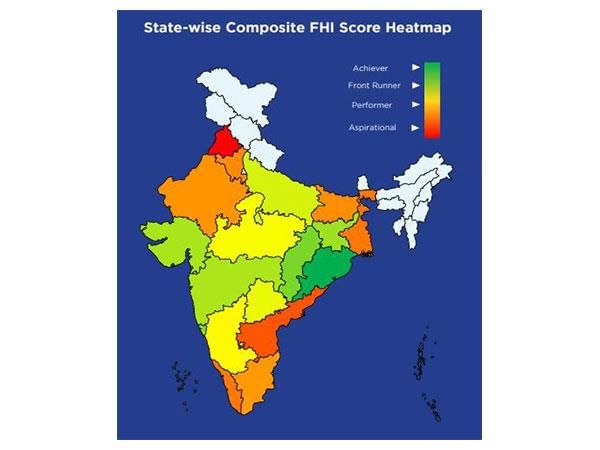 Why in the News?
Why in the News?The Chairman of the 16th Finance Commission, Arvind Panagariya, has introduced the first issue of NITI Aayog’s report titled “Fiscal Health Index (FHI) 2025,” highlighting the current state of finances across Indian states.
- The Fiscal Health Index (FHI) evaluates the fiscal performance of 18 major Indian states.
- Odisha emerged as the top performer in the FHI 2025 report.
- The FHI utilizes five sub-indices to assess fiscal health.
- Challenges remain for several states, particularly in debt sustainability and revenue mobilization.
Additional Details
- Fiscal Health Index: The FHI provides a structured approach to evaluate state finances, focusing on transparency, revenue mobilization, and sustainable public financial management.
- Sub-indices: The FHI comprises five components: Quality of Expenditure, Revenue Mobilization, Fiscal Prudence, Debt Index, and Debt Sustainability. These indices help policymakers identify areas for improvement.
- Top Performers: Odisha leads with an FHI score of 67.8, followed by Chhattisgarh and Goa, which excelled in various fiscal management practices.
- Aspirational States: States like Punjab, Kerala, and West Bengal are facing challenges, particularly with debt sustainability and revenue generation.
- Challenges and Recommendations: The report emphasizes the need for revenue diversification, prioritizing capital expenditures, comprehensive debt management, and enhancing transparency in fiscal reporting.
The Fiscal Health Index is an essential tool for benchmarking state financial performance and pinpointing areas needing improvement. While Odisha and Chhattisgarh exhibit robust fiscal management, other states must implement targeted strategies to address their challenges. By focusing on fiscal prudence and enhancing revenue mobilization, states can significantly contribute to India's economic resilience and promote inclusive growth.
GS2/Polity
Use of Loudspeakers Not an Essential Part of Religion
Source: The HIndu
Why in News?
The Bombay High Court has emphasized that the use of loudspeakers is not an essential aspect of any religion. This ruling aims to address noise pollution caused by places of worship, regardless of the religion in question.
- The court's directive is focused on curbing noise pollution from religious places.
- Loudspeaker use does not fall under the protections of Article 25 of the Indian Constitution.
- The decision stems from complaints regarding excessive noise levels in residential areas.
Essential Religious Practices Doctrine
- Overview: The Essential Religious Practices (ERP) Doctrine is a legal framework established by the Supreme Court to maintain a balance between individual freedom of religion and the state's regulatory powers.
- Key Features:
- Freedom of Religion: Protects practices considered essential to a religion.
- State's Role in Social Reforms: Enables the government to implement social reforms while respecting essential religious practices.
- Bifurcation of Practices: Differentiates between essential and non-essential religious practices, offering protection only to the former.
- Historical Context: The doctrine was first articulated in the 1954 case of The Commissioner Hindu Religious Endowments, Madras v. Sri Lakshmindra Thirtha Swamiar of Sri Shirur Mutt.
- Criticism: The application of this doctrine has faced criticism for inconsistency and lack of clarity.
Notable Legal Precedents
- The Durgah Committee, Ajmer v. Syed Hussain Ali (1961): The court ruled that only practices integral to a religion are entitled to protection.
- Ismail Faruqui v. Union of India (1994): The ruling stated that a mosque is not an essential practice of Islam.
Court Observations
- The use of loudspeakers is not an essential religious practice and lacks protection under Article 25.
- Noise pollution poses a public health risk and must be regulated to protect citizens' rights.
- Law enforcement is tasked with ensuring adherence to noise regulations and must not be passive in enforcement.
Case Background
Residents of Nehru Nagar, Kurla East, filed a plea regarding noise pollution from religious places exceeding permissible decibel limits during specified hours. The permissible limits are:
- 55 decibels during the daytime
- 45 decibels during the nighttime
Complaints made to local police were reportedly ignored, prompting the petition in the Bombay High Court. The court directed that:
- The police must measure decibel levels using mobile applications.
- Equipment violating noise norms may be seized.
- Initial violations should result in warnings, with repeat offenders facing fines and potential license cancellations.
- Measures should be taken to ensure the anonymity of complainants to prevent retaliation.
This ruling establishes a significant legal precedent regarding the use of loudspeakers in religious practices and highlights the importance of addressing noise pollution in urban areas.
GS3/Environment
 |
Download the notes
UPSC Daily Current Affairs: 25th January 2025
|
Download as PDF |
Vaigai River
Source: Times of India
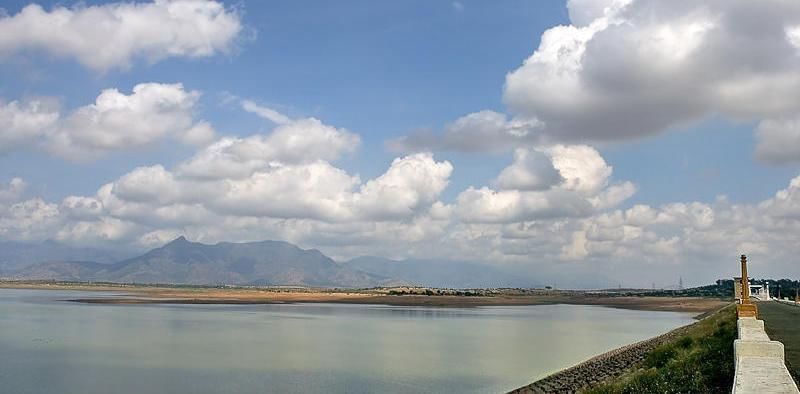 Why in News?
Why in News?The Madras High Court has mandated local authorities in the districts of Madurai, Theni, Dindigul, Sivaganga, and Ramanathapuram to develop and present a detailed action plan with specified timelines aimed at reducing pollution levels in the Vaigai River.
- The Vaigai River originates from the Varusanadu Hills in the Western Ghats of Tamil Nadu.
- It has a total length of approximately 258 km and flows into the Palk Strait.
- Significant towns located along the river include Keeladi, a historical site.
Additional Details
- Major Tributaries:The river is fed by several tributaries, including:
- Suruliyar River
- Varaha River
- Manjalar River
- Kottagudi River
- Kridhumaal River
- Minor Tributaries:Other smaller tributaries contributing to the river are:
- Sambanadi River
- Kumilaar River
- Utharakosa Mangaiyar River
- Conservation Sites and Programs:Key conservation initiatives include:
- Srivilliputhur Megamalai Tiger Reserve: This area serves as a crucial catchment and promotes biodiversity.
- Vaigai Dam: Located near Andipatti, it provides essential irrigation and drinking water supplies.
- Vaigai River Restoration Program: This program is focused on cleaning the river, improving water quality, and enhancing biodiversity.
In conclusion, the Vaigai River is not only vital for the ecosystems and communities along its banks but also plays a significant role in regional biodiversity and conservation efforts. The recent court directives emphasize the urgent need for action to protect and restore this important waterway.
GS3/Science and Technology
India to Launch First Human Underwater Submersible (Deep-Sea Manned Vehicle)
Source: MSN
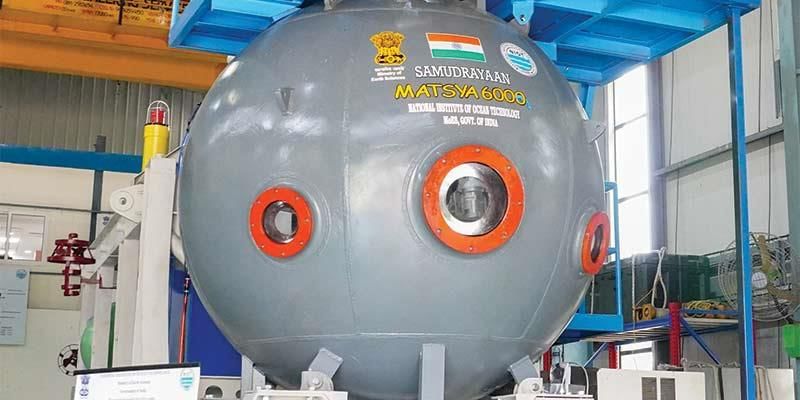 Why in News?
Why in News?India is preparing to launch its inaugural human underwater submersible, also referred to as a deep-sea manned vehicle, in 2025. This initiative signifies a notable milestone in the country's scientific and technological advancements.
- The submersible will initially operate at a depth of 500 meters, with plans to reach depths of up to 6,000 meters in the following year.
- This project is part of India's Deep Ocean Mission (DOM), aimed at exploring unexplored underwater resources and enhancing the nation's blue economy.
- The submersible is being developed with 100% indigenous technology, highlighting India's commitment to self-reliance in advanced science and innovation.
Additional Details
- Deep Ocean Mission (DOM): This ambitious initiative, approved in 2021 by the Ministry of Earth Sciences (MoES), focuses on developing technologies for deep-sea exploration. It is one of nine missions under the Prime Minister’s Science, Technology, and Innovation Advisory Council (PMSTIAC).
- Significant updates within DOM include Samudrayaan and Matsya6000, with the former being India's flagship manned expedition designed to reach significant depths in the Central Indian Ocean.
- The submersible will be constructed from titanium alloy to withstand pressure levels of up to 6,000 bar, ensuring durability for deep-sea missions.
India’s Ocean Exploration Milestones
- 1981: The commencement of ocean studies with a program focused on polymetallic nodules (PMN) at CSIR-NIO, marked by the collection of the first nodule sample from the Arabian Sea aboard the research vessel Gaveshani.
- 1987: India achieved Pioneer Investor status from the International Seabed Authority (ISA), allowing it to explore 1.5 lakh km² in the Central Indian Ocean Basin (CIOB) based on extensive surveys.
- 2002: A contract was signed for resource analysis, leading to the surrender of 50% of the allotted area while retaining 75,000 km², further refining the mining area to 18,000 km² identified as the First Generation Mine-site.
This upcoming submersible launch represents an essential step in India's journey towards leveraging its marine resources and enhancing its capabilities in deep-sea exploration.
GS3/Economy
India Becomes Largest Importer of Tea from Kenya
Source: The Hindu
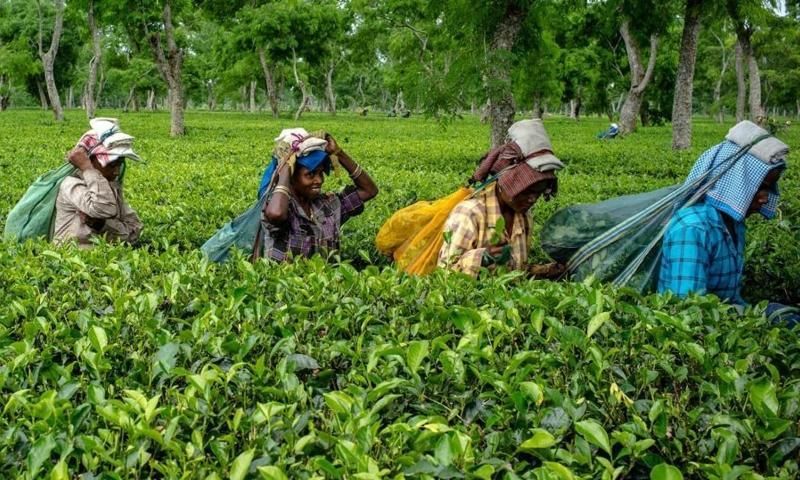 Why in News?
Why in News?India, known as the world's second-largest tea producer following China, has recently emerged as the largest importer of tea from Kenya. This development indicates a notable shift in the global dynamics of the tea trade.
- Tea imports from Kenya have skyrocketed from 3.53 million kg in 2023 to 13.71 million kg in 2024, marking an impressive 288% increase.
- The average price for Kenyan tea imported to India was ₹156.73 per kg, significantly lower than the ₹252.83 per kg that Assam tea commanded at auctions up to October 2024.
- India's tea exports rose by 13%, increasing from 184.46 million kg in 2023 to 209.14 million kg in 2024, with West Bengal being a major contributor to these exports.
Additional Details
- Tea Board of India: Established in 1954 under the Tea Act, 1953, the Tea Board succeeded the Central Tea Board and the Indian Tea Licensing Committee. It was originally formed under the Indian Tea Cess Bill (1903) to promote Indian tea both domestically and internationally. The Board is headquartered in Kolkata and operates 23 offices across India, including zonal, regional, and sub-regional offices.
- The Tea Board functions as a statutory body under the Ministry of Commerce and Industry, comprising 31 members that include representatives from Parliament, tea producers, traders, and trade unions. It provides financial and technical assistance for tea cultivation, manufacturing, and marketing, and supports research and development to enhance tea quality while ensuring compliance with pesticide residue standards.
- Tea Crop in India: The foundation of India’s commercial tea industry was laid under the Treaty of Yandabo (1826) when the East India Company gained control of Assam. The British introduced tea in the 19th century to compete with China's monopoly, establishing the first commercial tea garden in Chabua, Assam in 1837. Ideal conditions for tea cultivation include temperatures between 20°C and 30°C, annual rainfall of 150-300 cm, and slightly acidic, well-drained soil.
- India stands as the largest consumer of tea globally, accounting for 30% of global tea consumption, with significant production occurring in Tamil Nadu and Kerala.
This significant transition in tea imports and exports showcases India's evolving role in the global tea market and highlights the importance of the Tea Board of India in regulating and promoting the industry.
GS3/Environment
Global Plastic Action Partnership Expands to 25 Countries
Source: DTE
 Why in News?
Why in News?The Global Plastic Action Partnership (GPAP), an initiative of the World Economic Forum, has reached a significant milestone by expanding its network to include 25 countries. This expansion introduces seven new members: Angola, Bangladesh, Gabon, Guatemala, Kenya, Senegal, and Tanzania, representing a population of over 1.5 billion people.
- GPAP aims to combat plastic pollution globally by promoting a circular economy.
- The partnership operates through a robust governance framework involving multiple stakeholders.
- New members strengthen regional collaboration and knowledge sharing on waste management.
Additional Details
- Global Plastic Action Partnership (GPAP): GPAP is an initiative aimed at tackling plastic pollution worldwide through the promotion of reuse, recycling, and sustainable management of plastic waste.
- Governance and Structure: GPAP has a governance framework that includes a Governing Council and Advisory Committee, facilitating initiatives like Indonesia's National Plastic Action Partnership (NPAP).
- National Action Roadmaps: GPAP collaborates with stakeholders to create tailored National Action Roadmaps, such as Vietnam's initiative targeting a 50% reduction in plastic waste by 2030.
- Investment Mobilization: Efforts to align financial resources with waste reduction goals have resulted in substantial investments in countries like Ghana.
- Global Collaboration Network: GPAP connects global stakeholders, enabling the sharing of best practices between countries to adopt innovative recycling solutions.
The expansion of GPAP to include seven new African countries highlights a growing commitment to addressing plastic pollution, fostering regional collaboration, and promoting sustainable economic growth. The initiative aims to reduce greenhouse gas emissions associated with plastic waste and create millions of green jobs globally.
|
39 videos|4551 docs|974 tests
|
FAQs on UPSC Daily Current Affairs: 25th January 2025 - Current Affairs & Hindu Analysis: Daily, Weekly & Monthly
| 1. What are the key factors strengthening India-Indonesia ties beyond the China factor? |  |
| 2. How does the concept of constitutional justice relate to personal liberty in India? |  |
| 3. What recent research findings suggest about Tamil Nadu's role in the Iron Age? |  |
| 4. What are the foundational values of the Indian state as discussed in recent literature? |  |
| 5. What is India's Fiscal Health Index and why is it important? |  |





